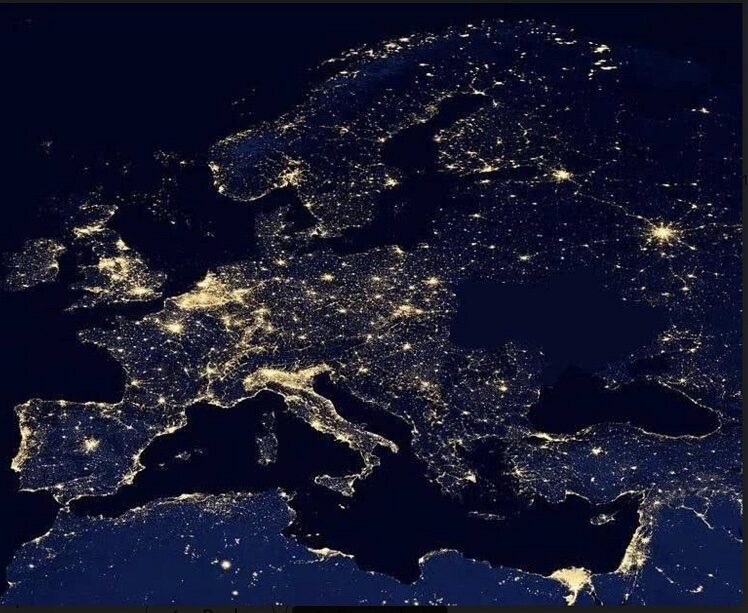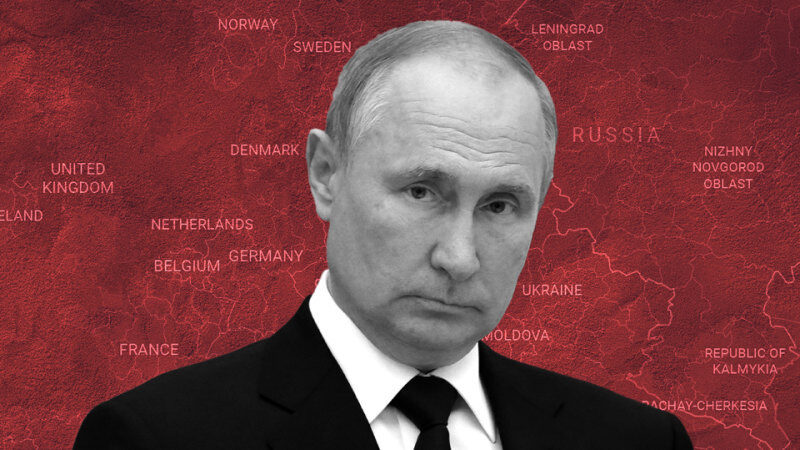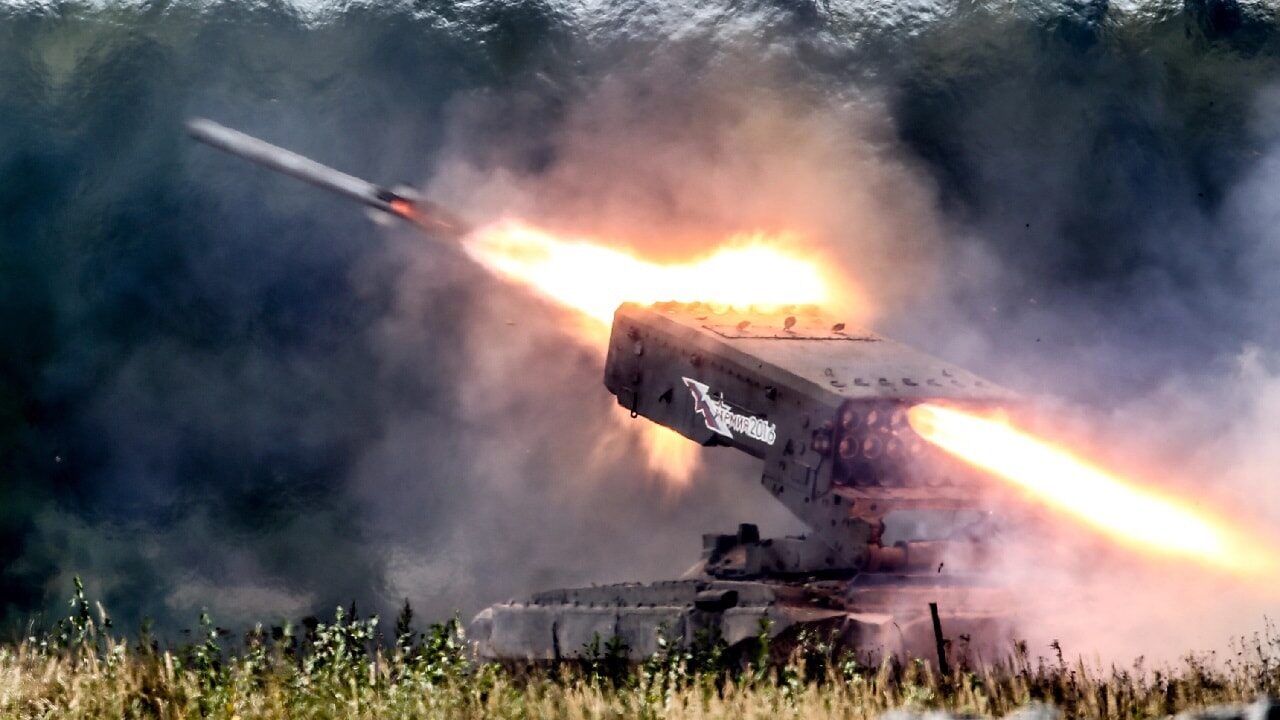"Ukraine's unquestioned strategic center of gravity is its western corridors to the Polish border where the vast majority of its war support enters the country. Their operational center of gravity is their resupply lines emanating eastwards from Kyiv to Ukraine's various frontline positions. Without those two corridors, it would be nearly impossible for Kyiv to sustain wartime operations for more than a few weeks. Putin, therefore, may calculate the best use of those 218,000 additional troops will be to launch a three-pronged axis to cut both of those supply routes." Lt. Colonel Daniel L. Davis, Senior Fellow for Defense Priorities and Contributing Editor at 1945
Another day of large-scale missile attacks on Ukraine's hobbled energy infrastructure has plunged much of the country into darkness. The relentless attacks — which continued through the night and into the early morning hours — have intensified dramatically as Russian combat troops continue to join their units along the perimeter in preparation for a major winter offensive. Russian President Vladimir Putin has waited patiently for the Zelensky regime to grasp the gravity of their situation and press for bilateral negotiations. But the Ukrainian president has stubbornly rejected diplomacy at every turn opting instead to fight til the bitter end. He is fully supported in that decision by his backers in Washington who see the conflict as an opportunity to weaken Russia so it cannot obstruct US plans to "pivot" to Asia. The transformation of Ukraine into a frigid, uninhabitable wastelands is largely the result of Washington's voracious geopolitical ambitions. This is from a post at the website Moon of Alabama:"I want to emphasize again that all tasks of the special military operation... will be unconditionally fulfilled." Russian President Vladimir Putin
Previous attacks had limited the distribution capacity to some 50% of demand. Controlled blackouts over several hours per day allowed to give some electricity for a few hours to most parts of the country. The attack today created a much larger problem. Not only were distribution networks attacked but also so the elements that connect Ukraine's electricity production facilities to the distribution network. All four nuclear power stations of Ukraine with their 15 reactors are now in shutdown mode. Kiev along with most other cities of Ukraine no longer has electricity." Ukraine - Lights Out, No Water And Soon No Heat", Moon of Alabama

The objective of the Russian operation is to undermine Ukraine's ability to wage war. The attacks on Ukraine's power-grid, railway hubs, fuel deports, bridges and command-and-control centers are merely Phase 1 of a 2-phase operation that is designed to defeat the enemy and bring the war to swift end. Russia has gathered roughly 500,000 troops in a combat Strike-Force that will traverse the country along three main axes annihilating Ukrainian Forces wherever they are encountered and seizing key cities along the way. Critical supply-lines from Poland will be blocked, leaving troops at the front cut-off and vulnerable to attack. Eventually, the regime and their Right-bloc security forces will be killed or captured. Moscow will not allow a government that is openly hostile towards Russia to rule the country. This is from an interview with Colonel Douglas MacGregor:
There are now 540,000 Russian troops stationed around the outskirts of Ukraine preparing to launch a major offensive that I think will probably end the war in Ukraine. 540,000 Russian troops, 1,000 rocket artillery systems, 5000 armored fighting vehicles including at least 1,5000 tanks, hundreds and hundreds of tactical ballistic missiles. Ukraine is now going to experience war on a scale we haven't seen since 1945." Colonel Douglas MacGregor, Rumble
MacGregor again — Everything has now changed... the large probability of offensives beginning in the next few weeks, whenever the ground freezes completely and the Russians judge their forces to be ready. and they will move in and they will finish off this Ukrainian state, let's not kid ourselves, The regime in Kiev is likely to be annihilated along with the remainder of its armed forces....
(Question — Is there any chance that US combat troops will be sent to fight in Ukraine?)The biggest mistake we in the west could make is to involve ourselves. We've done enough damage....and I think what we are going to see.... is the total destruction of this rump Ukrainian state. Now, what happens afterwards, I don't know. I'm quite confident that Russians do not want to remain in western Ukraine ...Russia is now treating Ukraine as a real enemy. Previously they were not. and this is not understood in the west." "Ukraine is about to be annihilated", Colonel Douglas MacGregor, youtube
Note — So, when the missile strikes end and the ground freezes, the Russian offensive will begin. But what is the plan? How will the Russians deploy their troops and what tactical objectives will they seek to achieve?MacGregor — We're in no position to go to war with Russia, and anything we would do on the ground would fail miserably and we'd be embarrassed. But obviously no one in Washington is listening...There's no real understanding of how desperate the situation is in western Ukraine. So what we can look forward to along with this massive (Russian) offensive is the migration of millions of more Ukrainians into Europe because they have no place else to go..... The Ukrainians know what's coming. There's not much they do about it at this point, but instead of throwing them a lifeline, we've essentially told them to sink with the ship that they're on." Col. Douglas Macgregor, "Ukraine is about to be annihilated", youtube; 6:35 min
While no one can say with certainty how the offensive will evolve, two recent posts at the military website 1945 provide a compelling and detailed explanation of what might take place if Putin decides to deliver the knockout punch to the Ukrainian armed forces and the political leadership in Kiev. The articles were written by 1945 "Contributing Editor, Daniel L. Davis who is a Senior Fellow for Defense Priorities and a former Lt. Col. in the U.S. Army who deployed into combat zones four times." Here are a few excerpts from the two pieces:
Much of what Davis anticipates has already taken place, so we will move on to his more stunning scenarios. The post below was published just one day after the article above. Here's what he says:If Putin orders an all-out attack, it will most likely start with a massive air, missile and drone attack to complete the destruction of the Ukrainian electric grids, substations, fuel storage facilities, rail yards, diesel locomotives, and communication facilities. Intent will be to make it intensely difficult to support the UAF, complicate communications, make intra-country movement of troops much harder, diminish their capacity to logistically support troops in disparate fronts with food, water, medicine, ammunition, and spare parts.
By increasing the burden on Kyiv to take care of the civil population throughout the country, there will be yet fewer resources to allocate to supporting the war. If Kyiv prioritizes supplying the combat units, civilians could freeze to death or starve as a result, putting the government in a terrible no-win situation....
The key to understanding what Putin's objectives may be is to assess what an additional 200,000 troops could reasonably accomplish in Ukraine: a three-pronged axis of advance designed to sever Ukraine's life blood - the supply corridor from the Polish border through which all NATO supply and equipment enters Ukraine." ("Putin could launch an all-out attack on Ukraine but it could be his downfall" Daniel Davis, 1945)
There is, of course, no way of knowing whether the war will actually play out in-line with Davis's scenario. It does seem likely, however, that Russian strategists have already figured out that the war cannot be won without cutting off vital supply-lines to Poland. That is the main artery that sustains the conflict and allows Zelensky to avoid negotiations. For Putin, attempting such a move would be a risky gambit that could precipitate his political downfall, but if he fails to seize the opportunity to force Kiev to the bargaining table, the war could drag on forever. There are no easy choices but — in this case — it appears the benefits clearly outweigh the risks.In this final edition, I will lay out what I contend is the most dangerous course of action Ukraine could face: a ground campaign to deprive Ukraine of its lifeblood from the West.... What I represent in this analysis.... represents the gravest danger to Ukraine ...
In this scenario, Putin recognizes that the number of troops he has for the task remains insufficient to capture large cities - and that he doesn't need to capture major cities to succeed. Instead, what he may seek to do is identify and then take out the Ukrainian center of gravity. (which) military theorist Carl von Clausewitz. (defined as.. "the hub of all power and movement (of the enemy), on which everything depends."
Meaning, in war, the overall objective should be to deprive the enemy of the one thing he must maintain to win the war..
In my assessment, Ukraine's unquestioned strategic center of gravity is its western corridors to the Polish border where the vast majority of its war support enters the country. Their operational center of gravity is their resupply lines emanating eastwards from Kyiv to Ukraine's various frontline positions. Without those two corridors, it would be nearly impossible for Kyiv to sustain wartime operations for more than a few weeks.
Putin, therefore, may calculate the best use of those 218,000 additional troops will be to launch a three-pronged axis to cut both of those supply routes: the priority effort in the west out of Belarus with the objective of Lviv, a supporting effort to the northeast in the Sumy direction, and supporting axis from the east to reinforce the current offensive in the Donbas.
A Russian attack out of southeast Belorussia with the objective of Lviv would represent the greatest strategic threat to the Ukrainian Armed Forces (UAF). Virtually all of the UAF's weapons, ammunition, and repair parts enter the country from Poland through several land routes towards Kyiv. If Russia were to cut these routes off by attacking along the Polish/Ukraine border down to Lviv, Russia could cut off the majority of the shipments of war material from the West, without which Kyiv would not long be able to sustain its forces at the frontlines in the eastern part of Ukraine. ...
If Russia employs a three-axes advance with its newly mobilized combat forces, added to the roughly 200,000 troops already engaged - and critically, avoids trying to invest cities - they will have a chance to focus their combat power where Ukraine is weakest, and in ways that are mutually reinforcing to other axes. This course of action would represent great risk for Zelensky's troops, but it isn't without significant risk for the Russians either. ... ("Putin Could Launch a Big Winter Offensive in Ukraine to Cut Off Weapons", Daniel Davis, 1945)





They must know something is up, and I'd like to suggest those ships are sitting ducks.
Homefield advantage in battle is no laughing matter when supply lines get cut.
BK
ps - submarines, big ones at least, are also most vulnerable. I put forth that in modern combat as it stands today, those that have the missiles precise, fast, and lethal are the ones who have the advantage and it seems this is fixing to be proven. Because as any game-player of tactical and strategic war games knows - ranged combat is where it is at to assert the force of will. Of course, combined arms is critical and now it is no wonder all the troops have been called to the front.